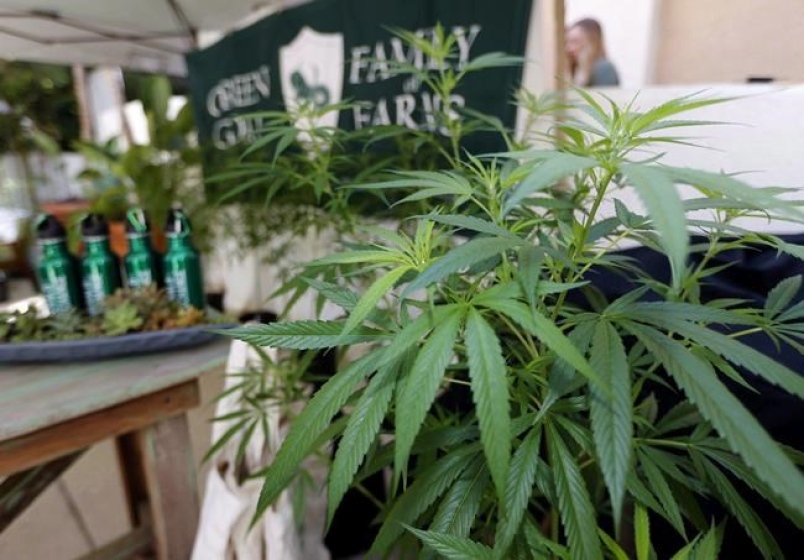(This is the second installment in a series that will look at the marijuana markets in each of Canada’s provinces and territories over the next few months. New Brunswickwas first.)
By Matt Lamers
One year ahead of recreational marijuana legalization, Ontario has become the hub of Canada’s licensed production, finance and ancillary cannabis industries.
Large licensed producers dominate the province’s marijuana sector. Opportunities for entrepreneurs will be less widespread but are expected to be available in ancillary businesses such as security, greenhouse supplies and accounting.
Ontario has the most potential consumers of any province. It also is home to the most LPs, including industry heavyweights Canopy Growth in Smiths Falls and Aphria in Leamington.
Moreover, it is the epicenter of Canada’s marijuana capital market, served by investment firms and venture capitalists.
“Other provinces will try to compete on grants, lower energy costs, etc., precisely because they’re at a natural disadvantage in all of these fundamental elements,” Omar Khan, former chief of staff to Ontario’s minister of economic development, told Marijuana Business Daily.
Another factor in Ontario’s favor: a nascent pharmaceutical sector revolving around cannabis that is largely based near Toronto.
The province’s strong cannabis foundation is built on its base of licensed cultivators, strength in life sciences research and development, and a world-class industrial greenhouse sector with well-established supply chains, said a spokesperson for Ontario’s Ministry of Economic Development and Growth.
But while “corporate cannabis” is set to cash in on legal marijuana, new entrepreneurs in Ontario will have a harder time.
The supply side will be ruled by hundred-million-dollar marijuana production companies.
And the retail side will be ruled by the world’s largest cannabis retailer – the Ontario government, which plans to have a state-run corporation oversee adult-use cannabis sales.
Market snapshot
A report produced by the Parliamentary Budget Office (PBO) in November 2016 paints a rough picture of what the legal cannabis market in Ontario could look like after adult-use legalization is implemented, which is expected to occur next summer.
Ontario could see annual recreational cannabis sales rise from 250 million Canadian dollars ($200 million) in 2019, the first full year after legalization, to almost CA$300 million when the industry is built out by 2021.
Estimates of recreational cannabis users in Ontario after legalization range from 1.8 million by the PBO to over 3 million in 2019 based on polling data.
Aggregate cannabis consumption in the province could be 254,000 kilograms (560,000 pounds) in 2019, rising to 284,000 kilograms (626,000 pounds) by 2021, according to a PBO estimate.
However, that isn’t going to translate into an immediate windfall for the Ontario government’s coffers, mostly due to upfront costs associated with building out a state-run retail monopoly and supply chain.
Annual provincial revenue could reach CA$90 million, according to the pro-business think tank C.D. Howe Institute, while Finance Minister Charles Sousa said CA$100 million “is not a ridiculous number to consider.”
Like in New Brunswick, demographics suggest Ontario will continue to be a hotbed for medical cannabis:
- Ontario is home to the largest veteran population in Canada, at 250,900 people.
- The number of seniors is projected to double to 4.6 million, or 25% of the population, by 2041.
Of Canada’s 201,000 registered MMJ patients, 86,000 reside in Ontario — the most in the country.
Retail
Recreational marijuana will be sold through a chain of 40 government-run stores initially, expanding to 150 in a few years – a move that effectively shuts private businesses out of Ontario’s MJ retail space.
Ontario has said it will aim for a recreational marijuana price of around CA$10 per gram ($8.10), which is slightly higher than the cost of black-market marijuana. Government officials say it will still be low enough to be competitive.
Ontarians and licensed producers, however, have expressed mixed reactions to the proposed price and the government’s plans to oversee the retail side of the business through a state-owned Crown corporation.
One poll found that most marijuana users think $10 per gram is reasonable.
But another survey found that most current and potential consumers would prefer to purchase cannabis products in a retail environmentand 65% believe licensed growers should be allowed to open retail stores.
LPs said they welcomed the clarity provided by the province but remain hopeful Ontario will revise the proposed legislation before it’s introduced this fall to include private retailers.
Analysts said that is unlikely, however.
“The current proposed system in Ontario of a Crown corporation retail is really a missed opportunity,” said Rosalie Wyonch, a policy analyst with the C.D. Howe Institute. “There was potential there could have been a significant new industry around recreational marijuana. There could have been the opportunity for a lot of small business startups, an entirely new industry.”
While retail will be off-limits to the private sector, the province did leave the door open to the possibility of licensing cannabis-consumption lounges.
Ontario has about a dozen unlicensed marijuana lounges that have operated in a legal gray area, mostly because they don’t dispense cannabis.
Ontario has about 150 unlicensed, illegal medical marijuana dispensaries, and the province has put them “on notice” that they will be shuttered.
Ancillary industries
With retail being off-limits to private businesses and cultivation licenses taking up to five years to acquire, entrepreneurs hoping to participate in the marijuana industry should consider ancillary niches.
“Ontario is well positioned for the ancillary industries because the majority of licensed producers are largely operating in the southern Ontario,” said Louis Barré, president of Ottawa-based Cannab Intel, a cannabis consult. “This creates significant demand for property and business development services.”
Ancillary opportunities are expected to exist in:
- Specialized greenhouse equipment
- Security services
- Shipping and distribution
- Marketing/branding
- Legal and accounting services
“Many of the LPs are developing ancillary products, such as cannabis-infused beverages and vaporizers,” said Barré. “While they can’t sell these in Canada for the foreseeable future, they are preparing for sale to legal U.S. markets. And, again, I am guessing that much of the ancillary product and business development is Ontario based, notwithstanding the ancillary product innovation occurring in British Columbia.”
Life sciences have been identified as a potentially significant ancillary industry. The Canadian Securities Exchange is home to 48 cannabis listings, including many in the life sciences sector.
“We have a burgeoning life sciences sector for an ancillary market. For example, if there’s going to be nascent pharma sector revolving around cannabis, where else in Canada is it really going to develop?” asked Khan, who is also a member of the Ontario Liberal Party campaign steering committee.
Cultivation
Ontario is home to a disproportionate number of licensed producers, because the province offers a number of advantages that others lack.
Almost 60% of Canada’s growers call the province home (35 as of Oct. 3), whereas Ontario has 36% of the country’s population.
Producers contacted by Marijuana Business Daily said it boils down to:
- Proximity to Toronto’s capital markets
- A large talent pool in agriculture, science and management
- Proximity to large population centers
- Affordable land with accessible utilities
“Southern Ontario has the largest concentration of greenhouses in North America,” said Zack Hutson, vice president of corporate affairs for British Columbia-based Tilray. “That means there is an established workforce and supply chain already in place there with the expertise to support our operations.”
With Ontario being Canada’s largest medical cannabis market, Hutson said it makes sense to locate some of Tilray’s production operations in close proximity to a large number of consumers.
In August, Tilray announced it will invest CA$30 million ($24 million) to convert an Ontario pepper farm into one of the nation’s largest marijuana production facilities.
The bottom line
The licensed industry took hold in Ontario from the onset following Canada’s legalization of medical marijuana in 2001. Consequently, capital markets, expertise and capacity were largely developed in Southern Ontario.
Barré of Cannab Intel expects that will be further reinforced as the industry continues to consolidate around the dominant players, resulting in even greater corporate centralization in Ontario.
“Cannabis in Canada has largely become ‘corporate cannabis in Canada.’ And the heart of corporate Canada is the GTA,” Barré said, referring to the Greater Toronto Ontario.
credit:mjbizdaily.com













